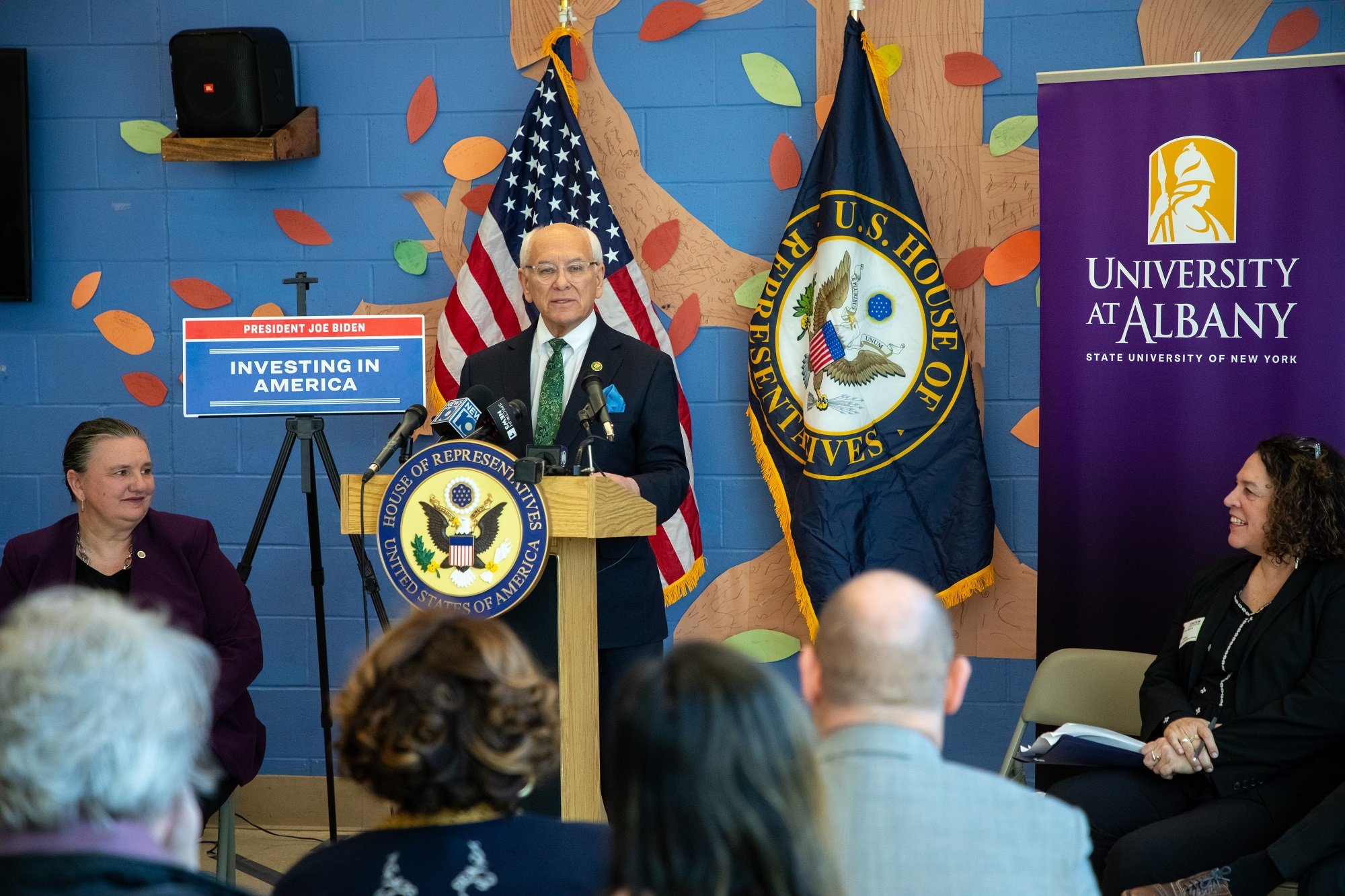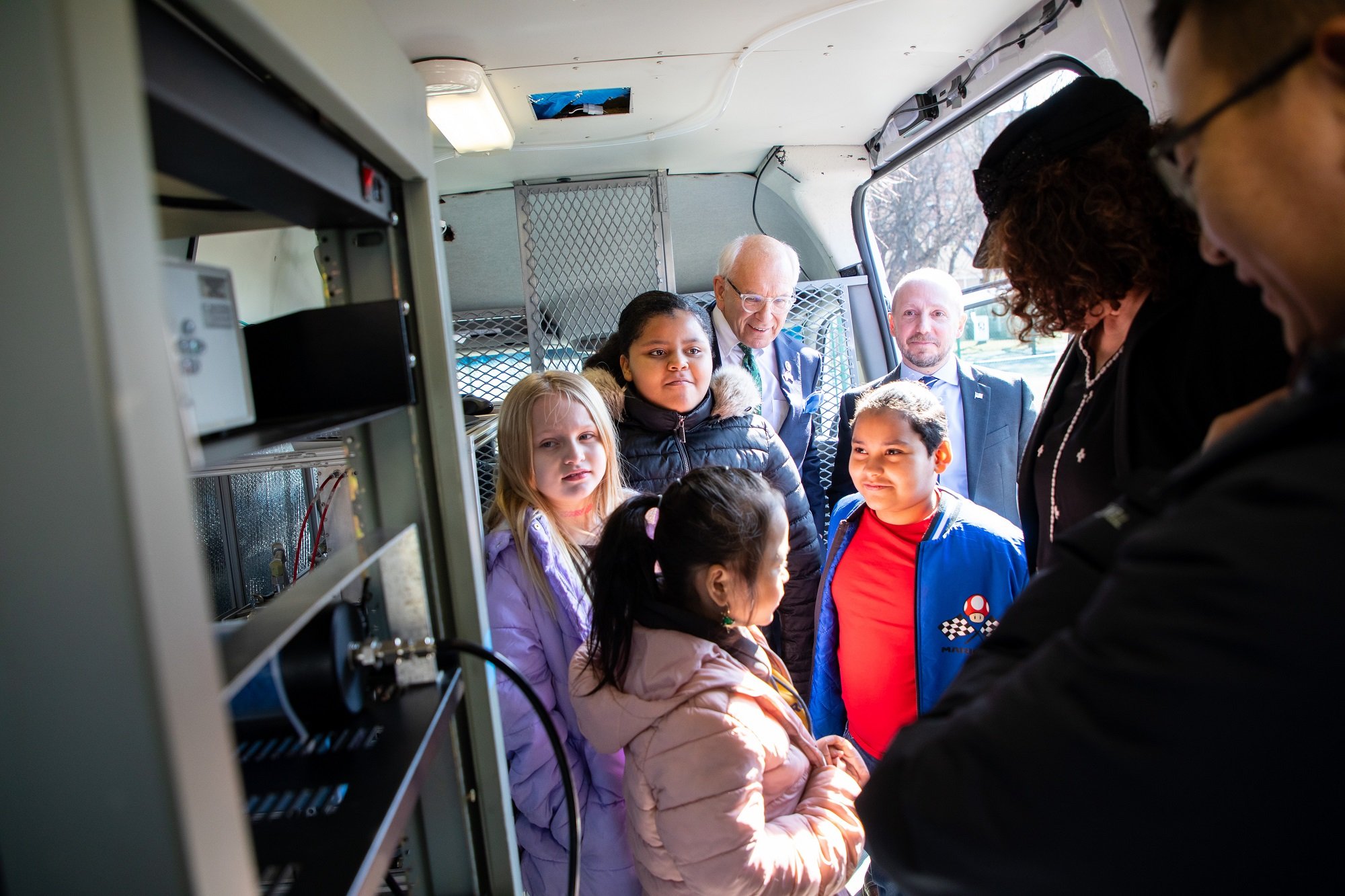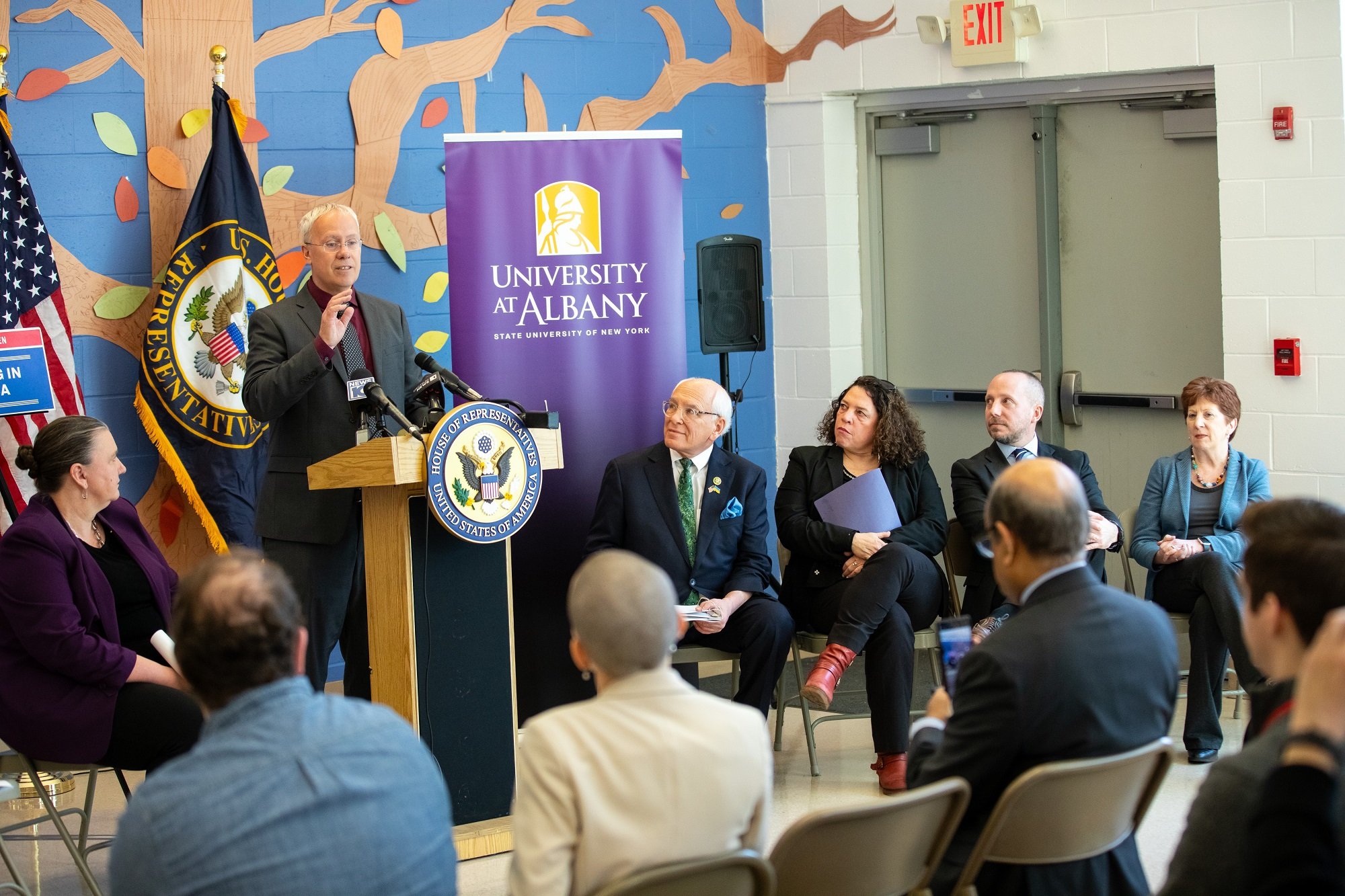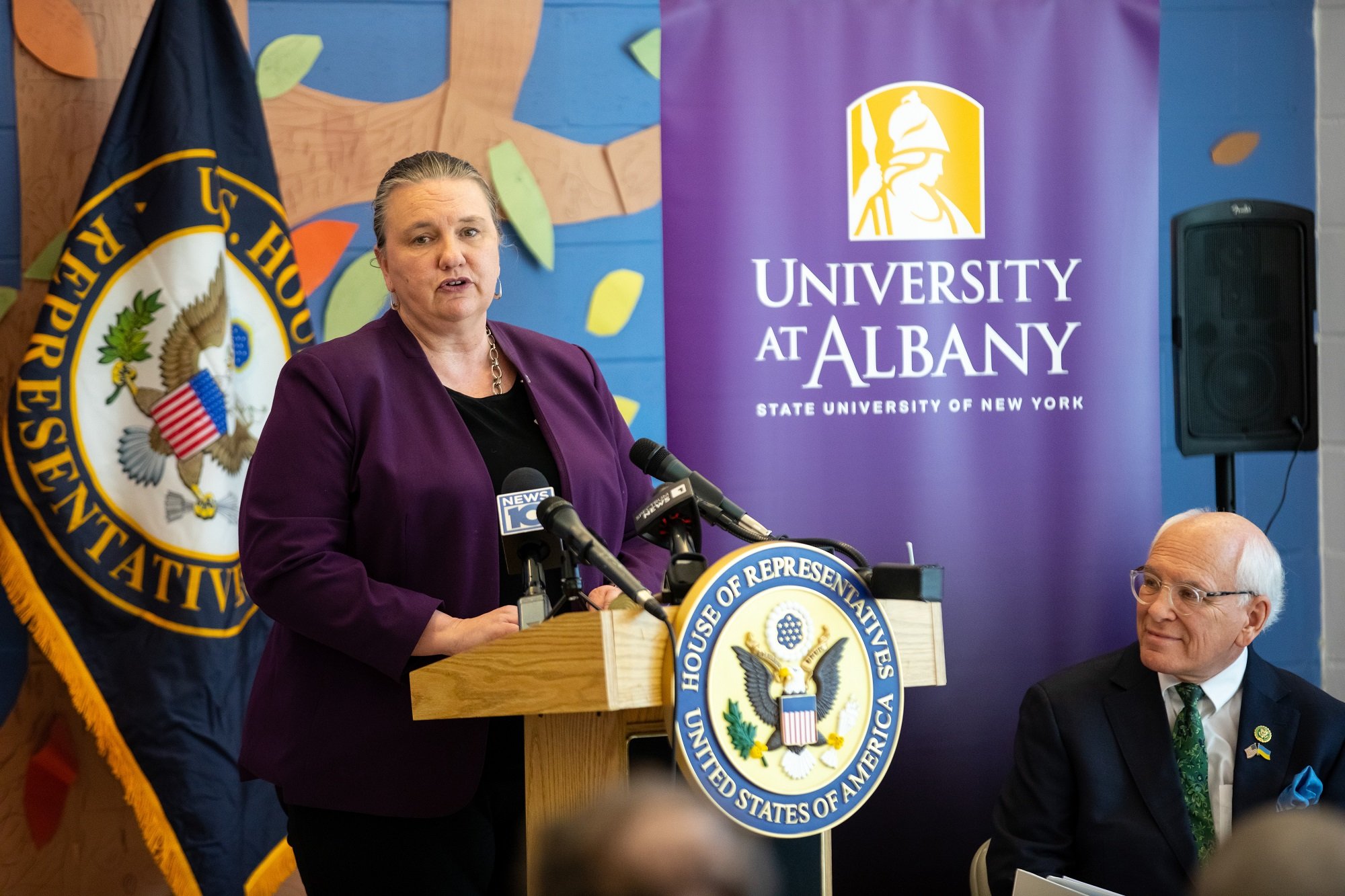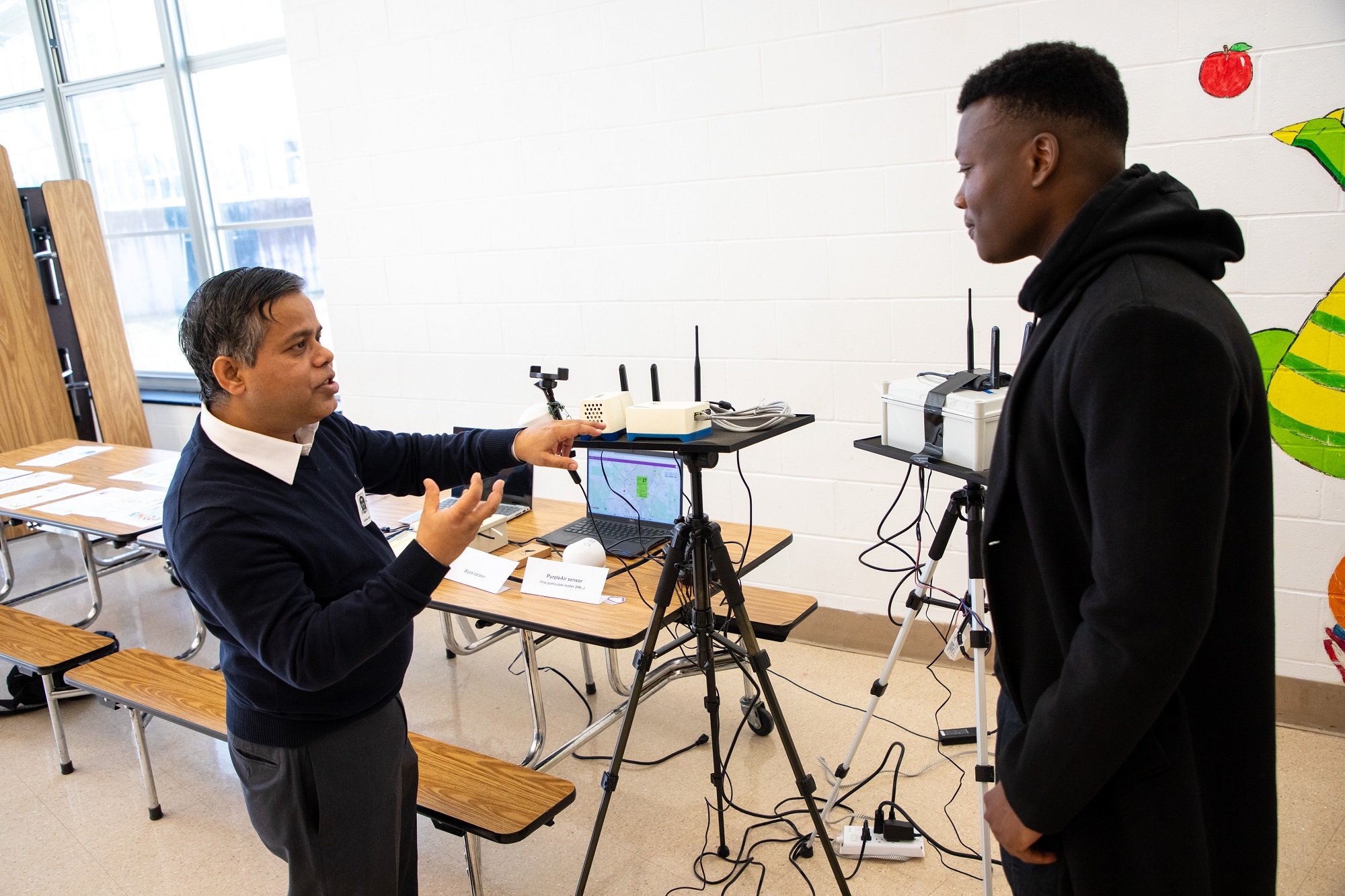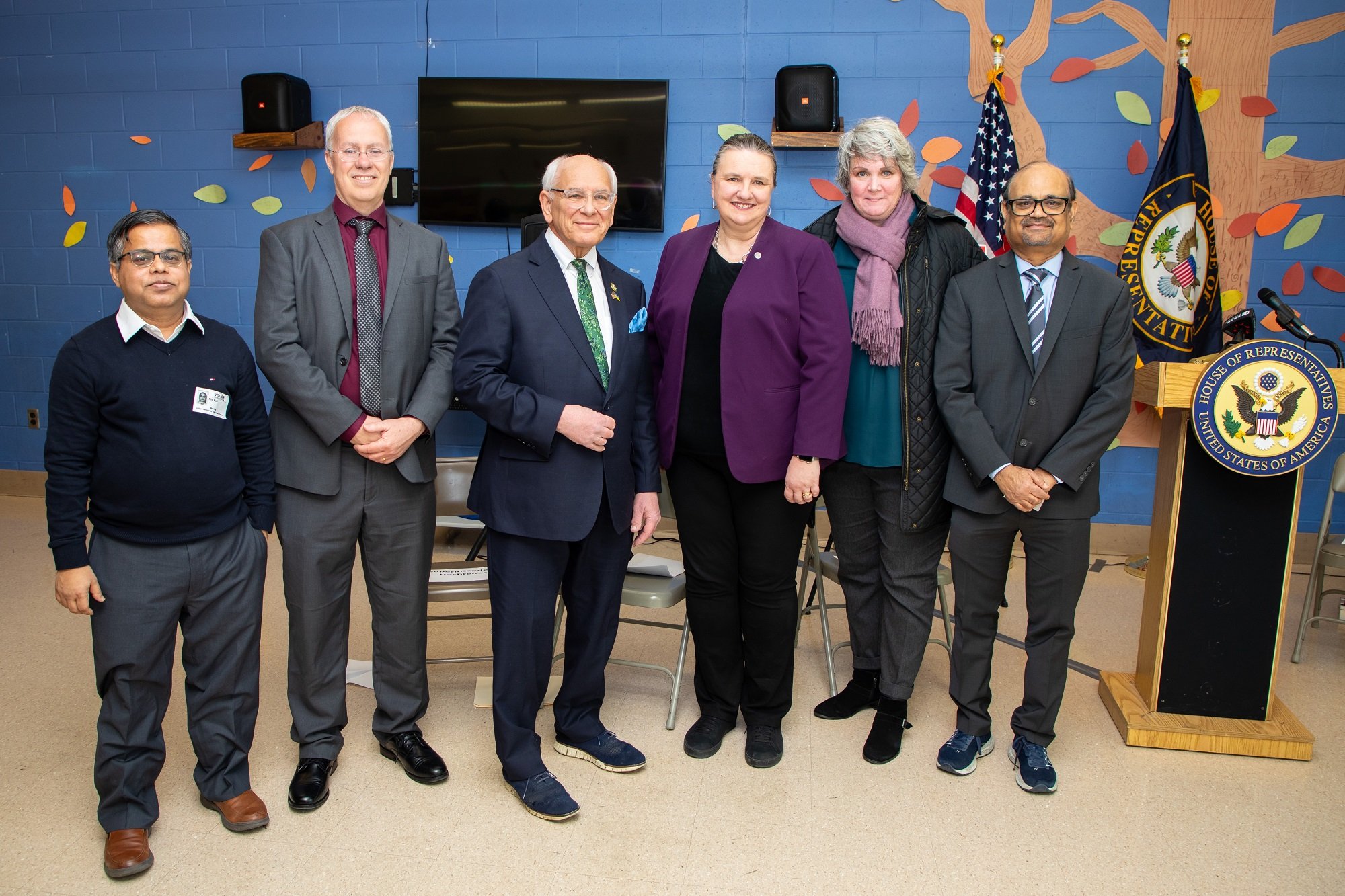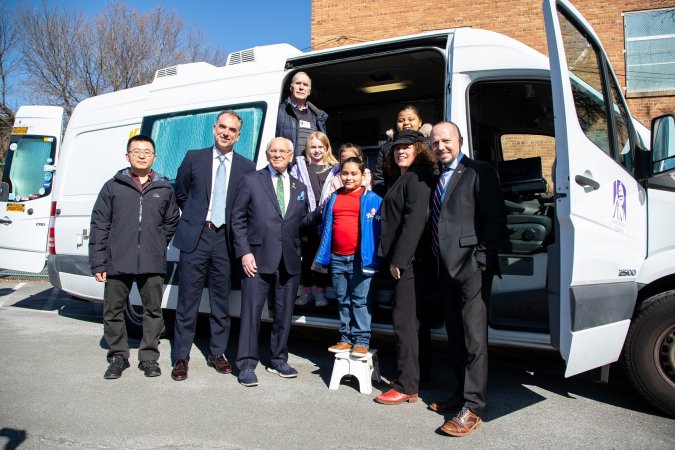EPA and Congressman Tonko Celebrate $1 Million Awarded to UAlbany Researchers for Air Monitoring Projects
By Mike Nolan
ALBANY, N.Y. (Feb. 27, 2024) — Communities in the Capital Region and other areas of New York will soon get valuable, real-time data from two community air monitoring projects led by researchers at the University at Albany.
The projects are funded by $1 million from the U.S. Environmental Protection Agency (EPA) under its efforts to invest in communities across America, including:
- $499,032 to create a New York Capital District communities air quality measurement network, which will be built based on low-cost sensors outdoor/indoor measurements, with K-12 schools serving as monitoring sites and supplemented by mobile lab measurements. The principal investigator is Jie Zang, a faculty researcher at UAlbany’s Atmospheric Sciences Research Center (ASRC).
- $499,939 to improve air quality and public health across underserved neighborhoods in New York by leveraging low-cost sensor monitoring to determine air pollutant exposures and engage and empower community stakeholders. The principal investigator is Md Aynul Bari, an assistant professor at UAlbany’s College of Nanotechnology, Science, and Engineering (CNSE).
To celebrate the awards, the EPA joined Congressman Paul Tonko, Albany Mayor Kathy Sheehan, New York State Department of Environmental Conservation Commissioner Basil Seggos, CNSE Dean Michele Grimm and ASRC Director Chris Thorncroft on Tuesday for a press conference at Giffen Memorial Elementary School, a future air monitoring site in Albany’s South End.
“As dean of the recently reinvented College of Nanotechnology, Science, and Engineering, I take great pride in seeing our faculty members engage in projects – like this one with the EPA – that will have a direct impact on residents in the Capital Region, especially those in underserved communities,” said Grimm, during the press conference.
“Findings from these projects will play a critical role in helping inform policy decisions and drive better practices for protecting vulnerable populations, including minority and low-income communities that face a disproportionate amount of pollution,” added Thorncroft. “We believe they will serve as a role model for researchers and policymakers who are developing community air quality programs across the nation.”
The press conference was followed by demonstrations of UAlbany air quality instrumentation with the Giffin students, including a mobile laboratory inside a 2007 Dodge Sprinter van. The van is installed with research-grade instruments that can measure air pollutants from the back of its cargo compartment.
In total, the EPA has awarded $53.4 million to 132 projects in 37 states through President Biden’s Inflation Reduction Act and American Rescue Plan — the largest investment for community air monitoring in the agency’s history.
UAlbany received nearly one third of the $3.4 million in funding that was awarded to seven projects in New York.
Photos by Patrick Dodson





